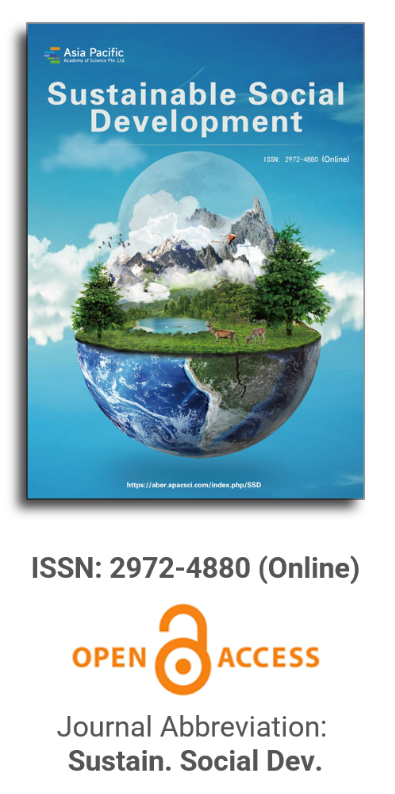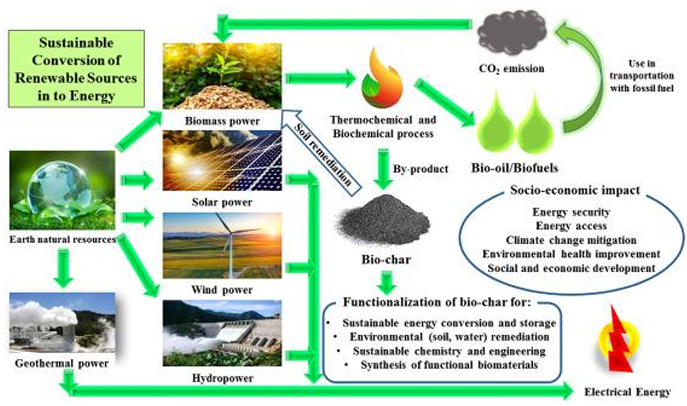
Asia Pacific Academy of Science Pte. Ltd. (APACSCI) specializes in international journal publishing. APACSCI adopts the open access publishing model and provides an important communication bridge for academic groups whose interest fields include engineering, technology, medicine, computer, mathematics, agriculture and forestry, and environment.

Depopulation in Spain and its educational treatment aimed at achieving sustainable ways of life and behaviour
Vol 1, Issue 3, 2023
Download PDF
Abstract
This communication aims to explain the origin, objectives, and format of educational materials developed by the authors for use in the classroom, specifically in geography or any subject dealing with knowledge and analysis, with students aged 14–18. It focuses on the depopulation process that has occurred in rural areas of Spain since the beginning of the 20th century (exemplified in the autonomous community of Aragon). This process has shaped their territory, population distribution, aging demographics, and the social issues that arise from it. To achieve this, its stages, characteristics, causes, consequences, and potential policies to halt depopulation are identified and analysed. To implement efficient teaching and learning processes aimed at students acquiring not only relevant and useful concepts but also skills or competencies in geographical knowledge techniques, an intensive use of Geographic Information Technologies (GIT) is proposed. Moreover, when GIT is integrated into educational strategies focused on competency-based didactic formulations (“know-how”). This transformation shifts geographical knowledge from rote memorization to a tool enabling the understanding of the environment in which students develop their lives and education. Thus, the educational materials presented here does not solely aim for an understanding of the depopulation process affecting the Spanish territory. Alongside this knowledge, the materials aim to facilitate competency acquisition in GIS (geographic information systems) and, consequently, in artificial intelligence.
Keywords
References
- Ministry of Agriculture, Fisheries and Food. Objective 1 working group (Spanish). Available online: https://www.mapa.gob.es/es/ (accessed on 19 December 2023).
- Economic and Social Council of Spain. Available online: https://www.ces.es/ (accessed on 19 December 2023).
- Ellis EC, Klein Goldewijk K, Siebert S, et al. Anthropogenic transformation of the biomes, 1700 to 2000. Global Ecology and Biogeography 2010; 19(5): 589–606. doi: 10.1111/j.1466-8238.2010.00540.x
- EUR-Lex. Regulation (EU) 2021/1058 of the European Parliament and of the Council of 24 June 2021 on the European Regional Development Fund and on the Cohesion Fund. Available online: https://eur-lex.europa.eu/legal-content/EN/TXT/?uri=celex%3A32021R1058 (accessed on 19 December 2023).
- Eurostat. Available online: https://ec.europa.eu/eurostat/web/gisco/geodata/reference-data/administrative-units-statistical-units/nuts?language=es&etrans=es (accessed on 19 December 2023).
- Imhof E. Thematic Cartography (German). Walter de Gruyter; 1972.
- Ayuda MI, Gómez P, Pinilla V. Which rural settlements have lost the most population? An analysis of a case study of north-east Spain (Aragón) (1900–2001). Rural History 2023; 1–19. doi: 10.1017/S0956793323000031
- Sanz Larruga FJ. The provision of social services in the face of the demographic challenge and rural depopulation in Spain (Spanish). https://repositorio.gobiernolocal.es/xmlui/bitstream/handle/10873/2135/06_SANZ_P118_P146_QDL_56.pdf?sequence=1&isAllowed=y (accessed on 19 December 2023).
- Gallardo M, Fernández-Portela J, Cocero D, Vilar L. Land use and land cover changes in depopulated areas of mediterranean Europe: A case study in two inland provinces of Spain. Land 2023; 12(11): 1967. doi: 10.3390/land12111967
- López EAC, Bosque RL, Rodríguez SE. Alternative economic practices at a local scale in urban spaces: The case of Zaragoza (Spanish). Boletín de la Asociación de Geógrafos Españoles 2022; 92. doi: 10.21138/bage.3041
- Laguna M. Spatial Variability of Rural Development and Environmental Protection Policies in the Management of the Territory of the Aragonese Pyrenees [PhD thesis]. Universidad de Zaragoza; 2004.
- Garcia-Ruiz JM, Lasanta-Martinez T. Land-use changes in the Spanish Pyrenees. Mountain Research and Development 1990; 10(3): 267–279. doi: 10.2307/3673606
- Gil JV, Moreno CG. The depopulation processes in Aragon educational materials for secondary education (Spanish). South Florida Journal of Development 2023; 4(8): 3260–3279. doi: 10.46932/sfjdv4n8-023
- Martínez L, Errea Abad TY. Depopulation and Marginalization in the Sierra Rioja (Spanish). Instituto de Estudios Riojanos; 2001. 181p.
- RTVE. Grooves (Spanish). Available online: http://www.rtve.es/alacarta/videos/historia-de-nuestro-cine/historia-nuestro-cine-surcos/3126543/ (accessed on 19 December 2023).
- Graells PM, Cánovas IÁ. The bimodal curriculum as a methodological and evaluation framework: Basic principles and improvements obtained in student learning and performance (Spanish). Educar 2014; 50(1): 149–166.
Supporting Agencies
Copyright (c) 2023 Javier Velilla Gil, María Laguna Marín-Yaseli
License URL: https://creativecommons.org/licenses/by/4.0/

This site is licensed under a Creative Commons Attribution 4.0 International License (CC BY 4.0).

Prof. Kittisak Jermsittiparsert
University of City Island, Cyprus





It is with deep regret that we announce the cancellation of the Forum on Sustainable Social Development & Computing and Artificial Intelligence, originally scheduled for June 15, 2025.

